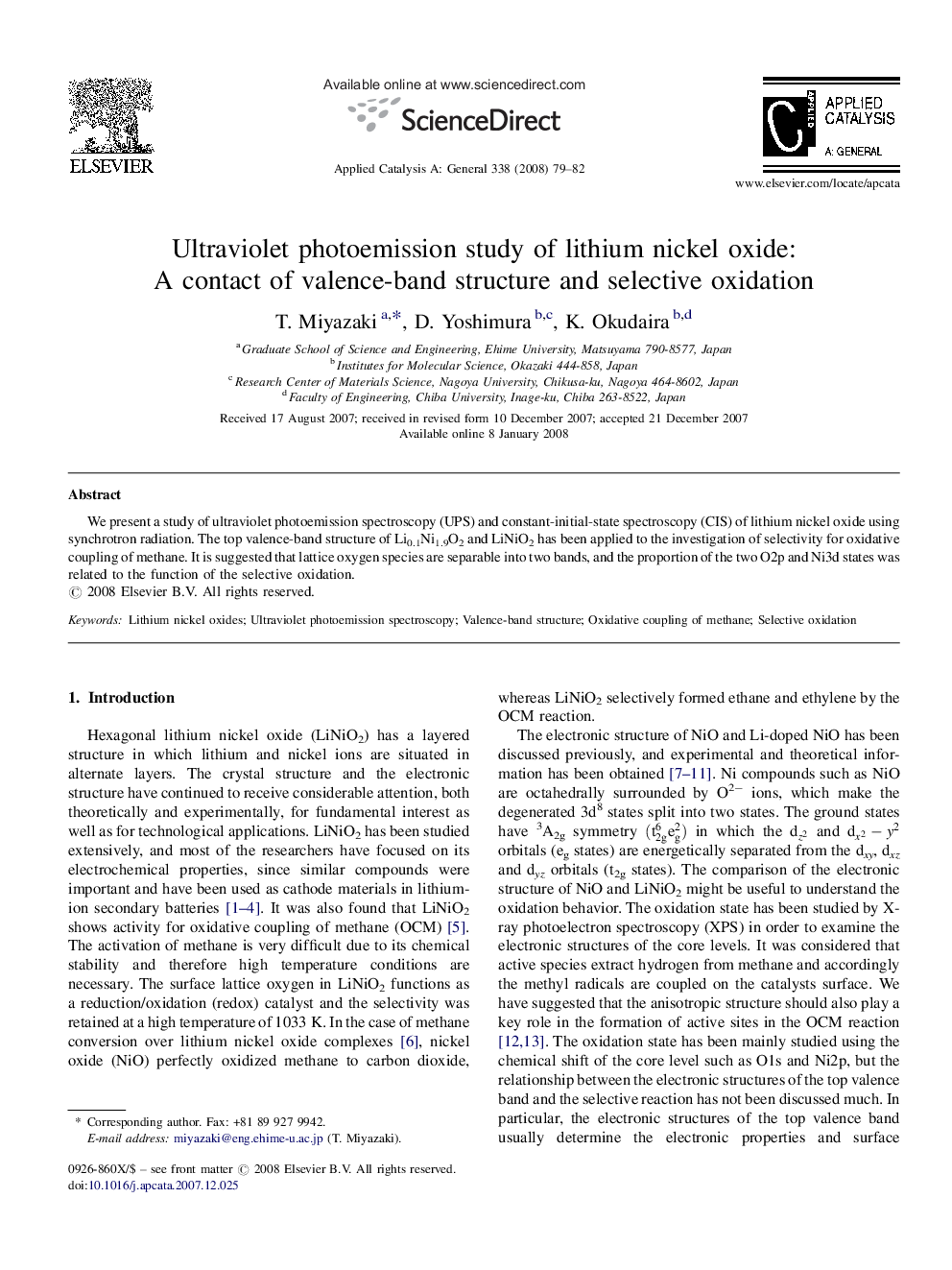| Article ID | Journal | Published Year | Pages | File Type |
|---|---|---|---|---|
| 43041 | Applied Catalysis A: General | 2008 | 4 Pages |
We present a study of ultraviolet photoemission spectroscopy (UPS) and constant-initial-state spectroscopy (CIS) of lithium nickel oxide using synchrotron radiation. The top valence-band structure of Li0.1Ni1.9O2 and LiNiO2 has been applied to the investigation of selectivity for oxidative coupling of methane. It is suggested that lattice oxygen species are separable into two bands, and the proportion of the two O2p and Ni3d states was related to the function of the selective oxidation.
Graphical abstractWe have examined the oxidative function and valence electronic structure of LiNiO2 as a selective oxidation model catalyst, because the surface lattice oxygen is converting methane to ethane and ethylene. The ultraviolet photoemission spectroscopy (UPS) and the constant-initial-state spectroscopy (CIS) were applied to identify the contribution of each element to the valence band of LiNiO2. As the UPS was surface sensitive technique and effective for the top valence-band structures which determined the activities of the selective oxidation, it should be carefully investigated for the surface electronic structure. Also, the treatment of sample by the argon sputtering was done in order to imitate dynamic redox surface and remove the surface impurity. It was confirmed that the surface oxygen was separable into two states at Eb < 15 eV below the Fermi energy. For comparison of Li0.1Ni1.9O2 and LiNiO2, it was suggested that the lattice oxygen species of the lower binding energy mainly formed in hexagonal LiNiO2. The selectivity of the oxidative reaction for methane should be decided by the formation of two oxygen states and its proportion of the density of states.Figure optionsDownload full-size imageDownload as PowerPoint slide
